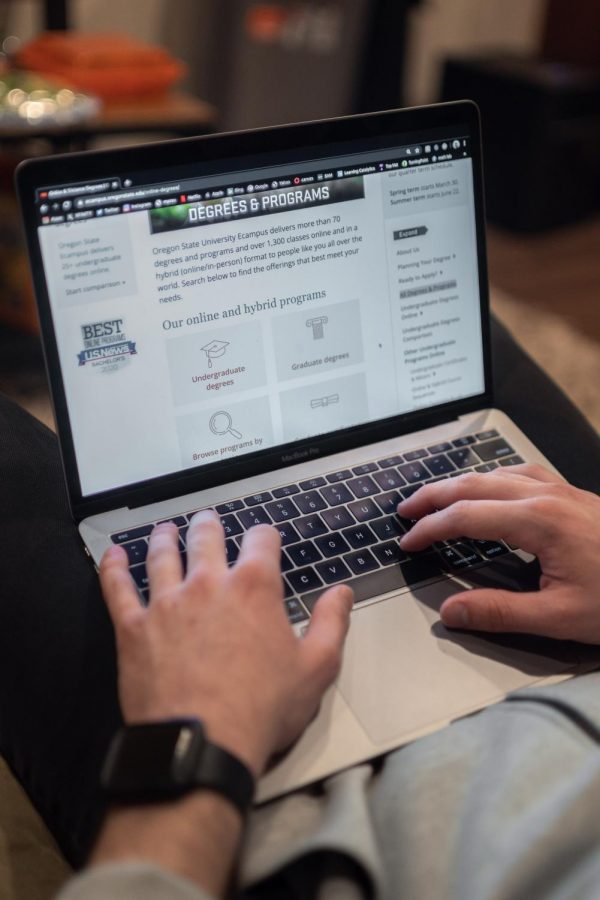Online teaching is not harder or easier than in-person instruction, it’s “just very different”
April 13, 2020
Each term, OSU students have the option to take online classes; the 10-week modules created by faculty and staff at Oregon State University range in experience and effectiveness based on the course.
All Ecampus classes and partnerships are connected directly to the department that the subject is in, leaving that department and its instructors responsible for creating their courses with the help of an Ecampus design partner who creates the visual aspects of the classes.
“Faculty members have subject matter expertise, and instructional designers have expertise in online course design, pedagogy, educational technology, as well as knowledge of accessibility and copyright requirements relevant for online course delivery,” said Shannon Riggs, executive director of Academic Programs and Learning Innovation for Ecampus.
Departments are also responsible for determining maximum class sizes, based on the type of class the course is. According to Riggs, this can include whether or not it is an undergraduate versus graduate class, the need for graduate teaching assistants and whether the course is writing-intensive.
Although these factors are taken into consideration, the overall experience of teaching a course can vary based on the communication between an instructor and their students.
“Teaching classes online isn’t necessarily harder or easier to manage than traditional on-campus courses, it’s just very different,” said Marita Barth, a professor of general chemistry at OSU. “I think you need to work pretty hard to build a community with your students, and that’s certainly more difficult to do online. You don’t have nearly as much spontaneous interaction with or between students, so it certainly requires some conscious effort to get a supportive, active community of learners up and running.”
Barth teaches approximately four Ecampus courses each term, in the general chemistry sequence for students at OSU who aren’t science majors. She also notes that the course load is fairly similar in comparison to an on-campus class, but there is extra effort required in order to thoroughly understand the concepts in class.
“I think that students sometimes feel that they have to do more work for online, but in reality you need to practice the problems and put in the work to really understand the material, whether you’re learning online or in the classroom,” Barth said.
For students who are athletes, Ecampus classes can often end up being the only logical option for class choice during registration.
Kristina Peterson, a sophomore and member of the OSU women’s gymnastics team said she takes Ecampus classes in order to attend practices and meets.
“I have had some good experiences and some bad [with Ecampus],” Peterson said. “Like one time, my teacher was out of the country and was trying to do our class, which didn’t work at all. Another time, I had a teacher who responded within the day and tried her best to help us in any way possible.”
It comes down to the communication between teachers and students, not the coursework, Peterson said.
With students moving to “remote teaching” due to COVID-19, online Ecampus modules are being transferred over to Canvas and used to determine their effectiveness.












































































































